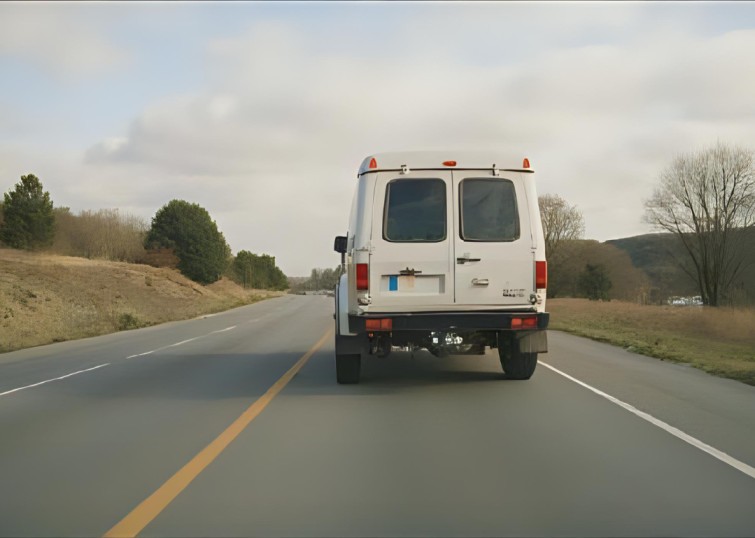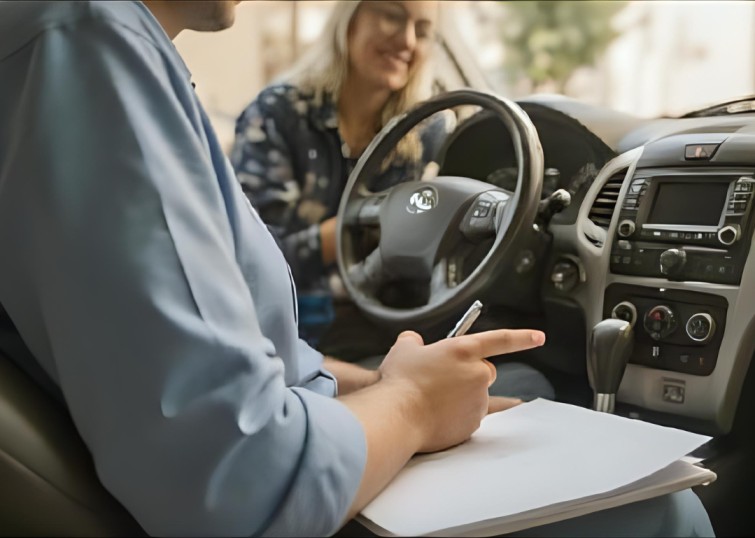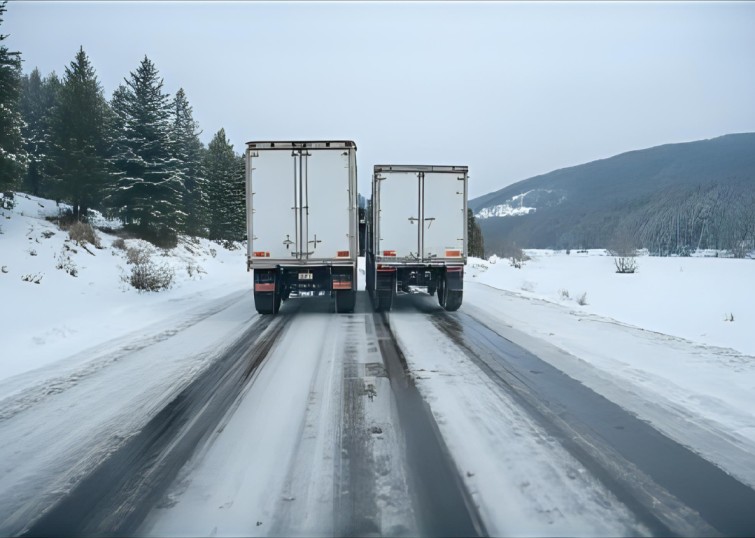TL;DR
If you are involved in a truck accident with a delivery driver, your safety comes first. Move to a secure location, call 911, and seek medical attention, even if injuries seem minor. Collect the delivery driver’s details, capture evidence (photos, witness contacts), and avoid discussing fault at the scene. Notify your insurance company promptly, and consult a qualified attorney, especially if injuries or property damage are significant. Delivery truck accidents often involve company liability, commercial insurance, and complex legal rules, so documenting everything and seeking legal advice can protect your rights.
Key Highlights
- Move to a safe spot and check for injuries immediately.
- Call emergency services (911) for medical and police assistance.
- Exchange information with the delivery driver, including employer and insurance details.
- Take photos of the scene, vehicles, road conditions, and any visible injuries.
- Collect contact details from witnesses.
- Avoid admitting fault or discussing accident causes at the scene.
- Notify your insurance provider as soon as possible.
- Seek medical evaluation, even for minor symptoms.
- Consult an attorney experienced in commercial vehicle accidents.
- Document all communication and keep records of expenses, repairs, and treatments.

Commercial trucks and delivery vehicles are a common sight on city streets and highways. With the rise of e-commerce, companies like Amazon, FedEx, UPS, and local courier services have expanded their fleets. According to the Federal Motor Carrier Safety Administration (FMCSA), over 500,000 large truck crashes occur annually in the United States, with a significant portion involving delivery vehicles. In urban areas, these incidents often lead to serious injuries, property damage, and legal disputes.
Delivery drivers operate under strict deadlines and often drive unfamiliar routes, increasing the risk of accidents. Many states, including California and Texas, have seen a surge in delivery truck collisions as online shopping grows. These accidents are unique because they involve commercial insurance policies, employer liability, and federal regulations such as the FMCSA’s Hours of Service rules.
Understanding the steps to take after a crash with a delivery driver can protect your health, financial interests, and legal rights. Acting quickly and gathering the right information can make a significant difference in your recovery and in any claims process. The following sections provide a detailed, step-by-step approach to managing every aspect of a delivery truck accident, from the moment of impact through insurance and legal considerations.
Hit by a delivery truck? An Atlanta truck accident attorney can help you take the next step.
1. Immediate Response: Safety and Emergency Actions
Securing the Scene
The moments after a collision with a delivery truck are critical. Your immediate priority is to prevent further harm. If your vehicle is drivable and it’s safe to do so, move to the shoulder or a nearby parking lot. Turn on your hazard lights to alert oncoming traffic.
Checking for Injuries
Assess yourself and passengers for injuries. Delivery truck crashes can cause whiplash, head trauma, broken bones, or internal injuries that may not be obvious right away. If anyone is hurt, provide basic first aid if you’re trained, but avoid moving injured persons unless absolutely necessary.
Calling 911
Contact emergency services promptly. Police will create an official report, which is essential for insurance and legal purposes. Paramedics can evaluate injuries, even if they seem minor at first. In some states, reporting a crash is required if injuries or significant property damage occur.
Preventing Secondary Accidents
- Set up warning triangles or flares if available.
- Stay inside your vehicle if it’s unsafe to exit due to traffic.
- Do not stand between vehicles or in active lanes.
Expert Insight: According to the National Highway Traffic Safety Administration (NHTSA), secondary crashes account for about 20% of traffic fatalities. Securing the scene reduces this risk.
2. Gathering Evidence and Information
Exchanging Details with the Delivery Driver
Obtain the following from the delivery driver:
- Full name, address, and phone number
- Driver’s license number
- Employer’s name (e.g., Amazon, UPS, FedEx, local courier)
- Vehicle registration and license plate
- Insurance information (commercial policy details)
Ask for the driver’s employee ID or badge if available. Many delivery drivers work for third-party contractors or as independent operators, which can affect liability.
Documenting the Scene
Use your smartphone to capture:
- Photos of all vehicles involved, from multiple angles
- Close-ups of damage, skid marks, and debris
- Road conditions (wet pavement, potholes, traffic signs)
- The delivery truck’s company logo and any identifying numbers
- Visible injuries to yourself or passengers
Witness Statements
Collect names and contact information from bystanders who saw the crash. Their statements can support your account if disputes arise.
Police Report
Request a copy of the police report or get the report number and responding officer’s name. This document is vital for insurance claims and legal proceedings.
Tip: Avoid discussing fault or cause of the accident at the scene. Statements made in the heat of the moment can be misinterpreted or used against you.
3. Medical Evaluation and Documentation
Seeking Immediate Medical Care
Some injuries, like concussions or soft tissue damage, may not show symptoms right away. Visit an emergency room or urgent care clinic soon after the accident, even if you feel fine. Medical records create a timeline linking your injuries to the collision.
Follow-Up Appointments
Keep all follow-up visits with your healthcare provider. Delayed treatment can weaken your case and complicate recovery. Document every diagnosis, prescription, and therapy session.
Tracking Symptoms
Maintain a daily log of symptoms, pain levels, and how injuries affect your daily life. This information can support claims for pain and suffering.
Medical Expenses
Save all receipts, bills, and insurance statements related to your treatment. These records are essential for reimbursement and legal claims.
Case Example: In a 2022 Georgia case, a delivery driver rear-ended a commuter during a rush-hour stop. The injured driver’s thorough documentation of medical visits and symptoms led to a successful insurance settlement covering medical bills and lost wages.
4. Reporting to Insurance and Understanding Liability
Notifying Your Insurance Company
Contact your insurer as soon as possible. Provide basic facts about the accident and let them know a commercial delivery driver was involved. Many insurers have strict deadlines for reporting claims.
Commercial Insurance Policies
Delivery companies typically carry commercial vehicle insurance with higher coverage limits than personal auto policies. This may include:
- Liability coverage (bodily injury and property damage)
- Cargo insurance
- Employer’s liability insurance
Determining Fault
Fault is determined by police reports, witness statements, and physical evidence. In some states, comparative negligence rules apply, meaning both parties can share responsibility.
Employer Liability (Respondeat Superior)
If the delivery driver was working at the time, their employer may be legally responsible for damages. This is known as “respondeat superior.” However, if the driver was off-duty or using the vehicle for personal reasons, the company might deny liability.
Third-Party Contractors
Some companies outsource deliveries to independent contractors. This can complicate claims, as multiple insurance policies may be involved.
Statistics: According to FMCSA data, commercial vehicles are involved in more than 100,000 injury crashes each year. Claims involving commercial policies often take longer to resolve due to higher stakes and more complex investigations.
5. Legal Considerations and Protecting Your Rights
Consulting an Attorney
If you suffered injuries or significant property damage, consult an attorney experienced in commercial vehicle accidents. Legal professionals can:
- Investigate the accident (obtain dashcam footage, vehicle maintenance logs, cell phone records)
- Identify all liable parties (driver, employer, vehicle owner, third-party contractors)
- Negotiate with insurance adjusters on your behalf
- File a lawsuit if settlement talks fail
Statute of Limitations
Every state has a deadline for filing personal injury or property damage claims. For example, Texas allows two years from the date of the accident, while California offers up to three years for property damage and two for bodily injury.
Preserving Evidence
Your attorney may send a “spoliation letter” to the delivery company, instructing them to preserve evidence such as:
- Vehicle maintenance records
- Driver’s hours-of-service logs (to check for fatigue)
- GPS and telematics data
- Delivery schedules
Comparative Fault and Damages
If both parties share fault, your compensation may be reduced by your percentage of responsibility. For example, if you’re found 20% at fault, your damages would be reduced accordingly.
Dealing with Insurance Adjusters
Insurance companies may attempt to minimize payouts. Do not give recorded statements or accept early settlement offers without legal advice. Adjusters may ask leading questions or request access to your medical history.
Real-World Example: In a 2021 case in Illinois, a delivery driver’s employer initially denied responsibility, claiming the driver was an independent contractor. The injured party’s attorney uncovered evidence showing the driver was acting within the scope of employment, resulting in a favorable settlement.
6. Steps for Recovery and Future Prevention
Vehicle Repairs and Replacement
Obtain multiple repair estimates and keep all receipts. If your car is totaled, your insurer will calculate its actual cash value. Rental car expenses may be covered under your policy or the delivery company’s insurance.
Lost Wages and Income
If injuries prevent you from working, document time missed and obtain a letter from your employer. Self-employed individuals should provide tax returns or business records to prove lost income.
Emotional and Psychological Impact
Accidents can cause anxiety, depression, or post-traumatic stress. Seek counseling if needed and include these expenses in your claim.
Preventing Future Incidents
- Practice defensive driving around delivery trucks; give them extra space.
- Watch for sudden stops or wide turns, especially in residential areas.
- Report unsafe delivery driving to the company’s safety hotline.
Staying Informed
Monitor the status of your claim and stay in contact with your attorney and insurance adjuster. Keep copies of all correspondence.
Expert Tip: Many cities now require delivery companies to provide driver training and regular vehicle inspections. Familiarize yourself with local safety initiatives and report concerns to transportation authorities.
Don’t deal with it alone, call an Atlanta truck accident attorney today.
Conclusion
Handling a truck accident with a delivery driver demands swift action, clear thinking, and thorough documentation. Your first step, ensuring safety, collecting evidence, and seeking medical care, are vital for your physical recovery and any future claims. Understanding the unique aspects of commercial insurance, employer liability, and legal deadlines can give you a significant advantage when negotiating with insurers or pursuing compensation.
Delivery truck accidents often involve multiple parties and complex insurance policies. Consulting an attorney ensures your rights are protected and that responsible parties are held accountable. Keeping detailed records of all expenses, injuries, and communications can make the difference between a denied claim and a fair settlement.
If you or a loved one has been involved in a delivery truck accident, take action now. Reach out to an experienced attorney, follow up with your healthcare provider, and stay proactive throughout the claims process. Acting quickly can help you secure the compensation you deserve and set the stage for a full recovery, physically, financially, and emotionally. Contact us for a free consultation today.



